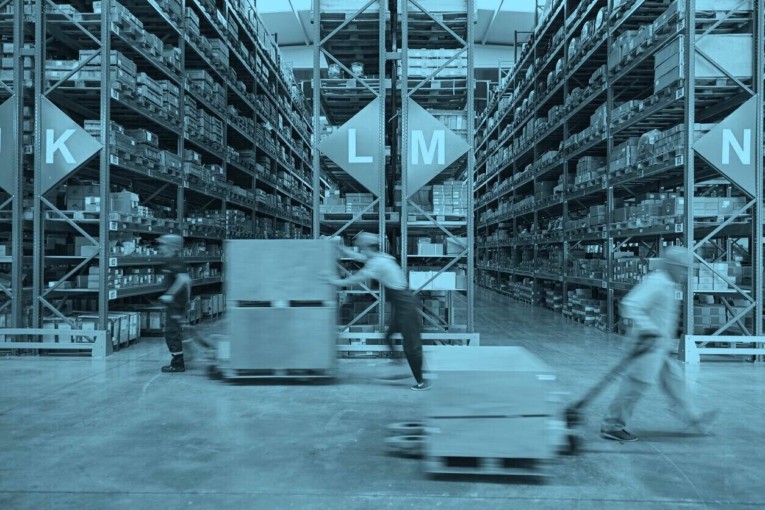Someone walks up to a whiteboard that says “Days without an accident” and erases the current number, writing an exaggerated zero in its place. Movies and TV shows love to use sight gags like this to emphasize comedy in their fictional workplace. Television is one thing. In reality, safety in the warehouse is serious business.
According to OSHA, there were more than 2.8 million non-fatal work-related injuries in 2019 alone. That same year, there were 5,333 workplace fatalities, a number that has steadily increased over time. On top of the human toll that workplace accidents take, there’s also a financial aspect to consider. It is estimated that for each workplace injury, a company can expect to spend $150,000. If the injury is serious or results in death, OSHA fines can be in excess of another $126,000. The bottom line? These are costs you cannot afford to bear.
Workplace accidents and injuries take a heavy toll. That’s why it’s essential to create a safe working environment where caution and prudence are the cornerstones of your warehouse culture. Below are seven tips to help you achieve a safe, secure working environment.
1. Let Data Drive Your Priorities
Record keeping is important. While it is a requirement that you report workplace injuries to OSHA, it is also in your company’s best interests to develop your own database. It is essential to track every incident and accident that occurs on company time in order to develop a clear picture of your facility’s risk factors. Thorough record-keeping can help you track:
-
Minor injuries
-
Serious injuries
-
Potentially serious injuries
-
Injury frequency
-
Injury location
-
Common hazards
It is also recommended that you begin tracking accidents that almost occurred, i.e., near misses. Armed with actionable data, you can develop a remediation plan to help bolster your company’s safety practices.
2. Build A Culture of Accountability
Safety programs may seem like a monolithic set of rules built by the HR department. It’s human nature to rebel against authority, however. Supervisors, foreman, and company leadership don’t have to be the safety police, though. It should be your goal to build a culture of accountability in your warehouse. A culture of accountability occurs when leadership takes a consultative role, where each employee holds their peers accountable to the rules instead. For example, your forklift operators should hold each other to an agreed-upon speed limit. Pedestrians should adhere to well-defined footpaths through hazardous warehouse space. Machine operators should follow a specific lockout/ tagout procedure for malfunctioning machines. A culture of accountability craves defined rules, policies, and procedures that are enforceable.
3. Celebrate Your Successes
Positive warehouse safety culture shouldn’t focus solely on rules, regulations, and the negative impact of unsafe practices. There’s a time and place for that, but the goal of a well-built safety program is moving the needle toward the positive. For example, if your warehouse has historically run with seven OSHA recordable injuries for every 100 workers, but you’ve managed to reduce that to 5 recordable injuries through better safety practices, celebrate your shared success.
While every warehouse has a goal of zero injuries, focusing solely on the end result can inhibit your organization’s progress. Celebrate the little victories with your staff. It will boost their morale and energize them to meet that ultimate goal. It also provides the perfect opportunity for senior leadership to talk with frontline workers about their concerns and reinforce safety protocols.
4. Lead From the Front: Safety Champions
Think back to your early days in elementary school. Teachers didn’t throw a book on the desk and say, “Read this while I get my coffee.” Children don’t learn that way. Few adults do either. It is a point of diminishing returns to give your employees a safety manual and say, “Memorize this.” You must lead by example.
That’s the role of a workplace safety champion. A safety champion is a senior-level employee —like a foreman or floor manager— who leads by example. They are the old adage “practice what you preach,” personified. They have to take a proactive and visible role in warehouse safety, and their actions should speak louder than words.
5. Gain Feedback: Talk WITH Employees
No matter what an employee’s personal demeanor is like, everyone understands the dangers of working in a warehouse. It’s important to solicit their feedback on warehouse conditions, operations, policies, and procedures. Your frontline employees encounter more dangerous situations than anyone else in your organization. Let their feedback help guide the evolution of your safety program.
By involving your warehouse staff in key safety decisions, you will foster a commitment to your company. Employee engagement, in turn, is critical in spurring your workforce to produce exceptional results. But remember, talk WITH them, not TO them; they are adults, and your respect is an essential aspect of engagement.
6. Build Solid Working Relationships
Managers and supervisors that fail to foster an open-door policy risk creating a negative work environment where accidents are not reported promptly —if at all.
Reporting a workplace accident can be a difficult thing for some employees. It is accompanied by shame, fear, and a sense of failure. As company leadership, you’ve got to work to build strong relationships with each of your employees so that your frontline staff feels safe coming to you and reporting incidents in a timely manner. A culture of compliance and safety begins with trust.
7. Don’t Forget the Everyday Procedures
A well-developed safety program is built in large part on trust, respect, and communication. That doesn’t mean you can forgo the everyday procedures that make your warehouse shine.
Make sure floor areas are clean and clear at all times. Staff should be encouraged to take ownership of an orderly stockroom, cleaning debris, and misplaced inventory from forklift lanes and pedestrian footpaths. Don’t forget to check machines on a regular basis, performing general maintenance and proactive upkeep. After all, warehouse safety is both programmatic and street level.
Symbia Logistics specializes in 3PL and outsourced warehouse management. Make sure to follow us for more cutting-edge industry trends, or contact us to inquire about a full range of our logistics services.





